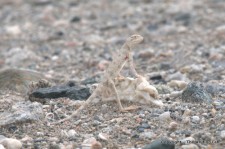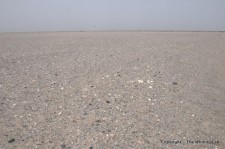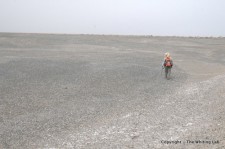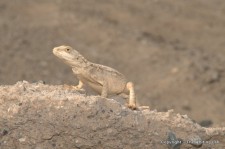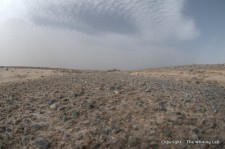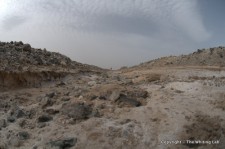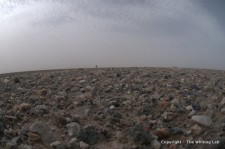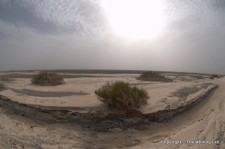We have just recently finished working on a particularly interesting lizard: the toad-headed agama Phrynocephalus axillaris. We found a population on the gravel plains just west of Ruoqiang, in central Xinjiang Province, while searching for another species, P. forsythii. On that topic, P. forsythii has proven to be something of an achilles heel for us, but more about that later.
Ruoqiang is a rapidly growing city with plenty of infrastructure and new apartment blocks are being built at a rapid rate. The area is also known for its interesting geology, and as you drive out of the city, there are obvious signs that the surrounding landscape has been thoroughly worked over in a quest for rocks, minerals, and perhaps stone and sand for construction. Also, after talking to some locals, we learnt that there is a program to attract people from other parts of China with land incentive schemes. Xinjiang, because it is so arid, is one of the least densely populated areas of China and the government is perhaps trying to shift this balance and at the same time promote agriculture. Around Ruoqiang, this means reclaiming the desert by first scouring the surface of much of its stony substrate. The sheer scale of this activity is hard to describe and initially, I wasn’t too sure whether we were looking at a natural landscape or something completely transformed. But when you look closely all the evidence of earth removal is there, it’s just that it now looks relatively level and neat. We drove for 40 km west of Ruoqiang and the landscape was unchanged. When we spoke to a local from a town 150 km to the west, we were told that the landscape was the same all the way to her home town and beyond. What also struck me as odd was the almost complete absence of any plant life even though the ground was wet in places and there were quite a few river drainages with evidence of recent flow.
What does this all mean for desert lizards? We saw very few Eremias, a normally common lacertid that depends on vegetation clumps. And we found a solitary agama sitting atop one of very few remaining large rocks. We also laboured to find P. axillaris, a species that we later found to be abundant at another site. We sometimes walked for hours without seeing a single lizard. As it turned out, P. axillaris was very patchy in this area and we had our best success in relatively small areas where there was still rocky substrate (see photos). This essentially means that this population is already fragmented into very small, isolated pockets for which there will likely be genetic and evolutionary consequences in the future. In functional terms, this is a lizard community which is a shell of its former self, living in a highly transformed landscape with little to no vegetation and probably less insect prey than in the past. I guess the good news is that in the bigger picture, Xinjiang Province is massive and all these species still occur at high abundance in other areas. We can only hope that doesn’t change, but somehow that seems unlikely over the longer term.
Stay tuned for future dispatches about the behaviour and ecology of crazy tail-waving toad-headed agamas!
- Phrynocephalus axillaris male on gravel substrate with small rocks that are used for postural adjustments to thermoregulate.
- Gravel-stone plains that extended for as far as the eye can see (and a lot farther!) with little to no vegetation and devoid of rocks useful to lizards.
- Dr. Qi Yin on the hunt for Phrynocephalus axillaris.
- The only agama we saw during many hours and km of searching. It was sitting on one of only a few rocks of any appreciable size.
- A lizard’s eye view.
- A lizard’s eye view along a dry river bed.
- Gravel-stony plains which were only suitable for toad-headed agamas when small stones and pebbles were present.
- A nearby dry river bed, the only place we saw vegetation clumps.

